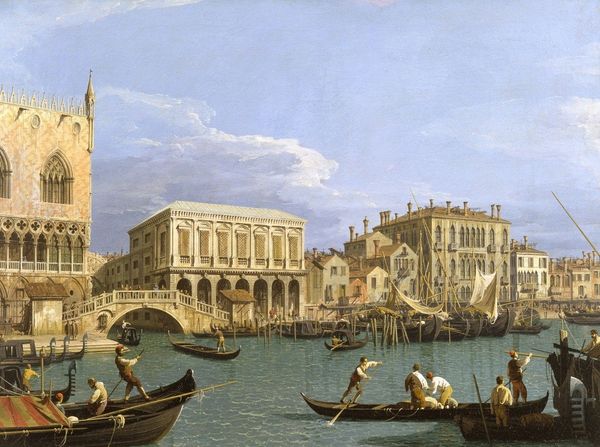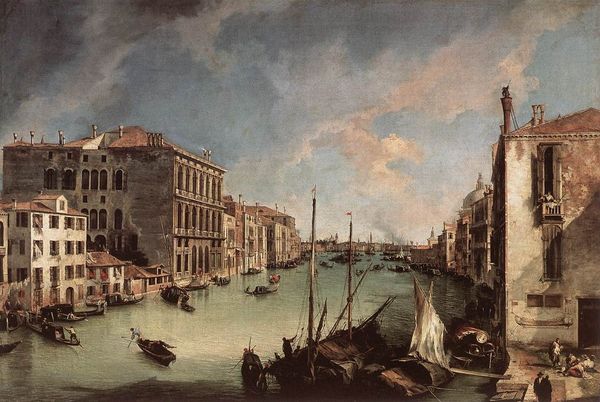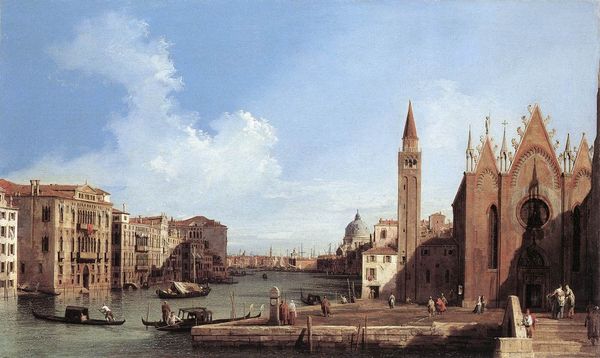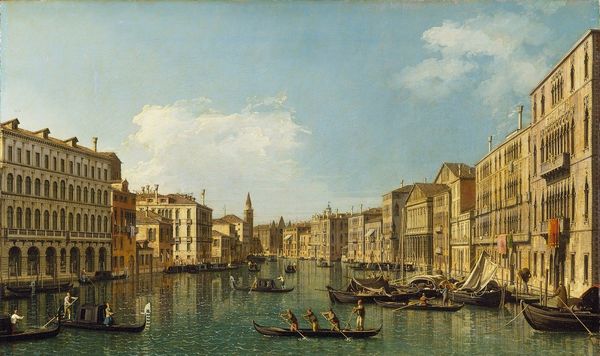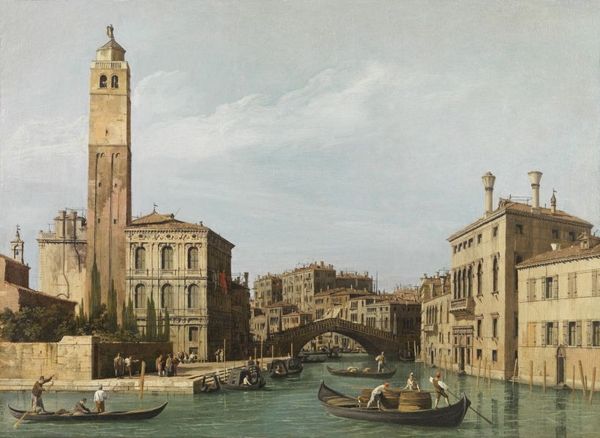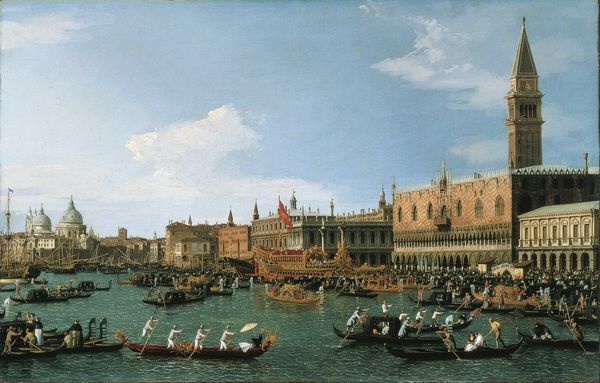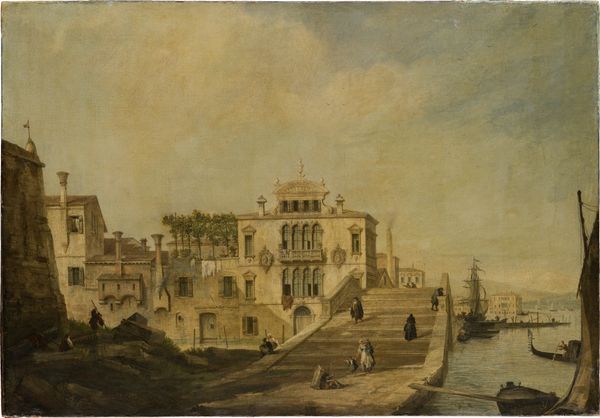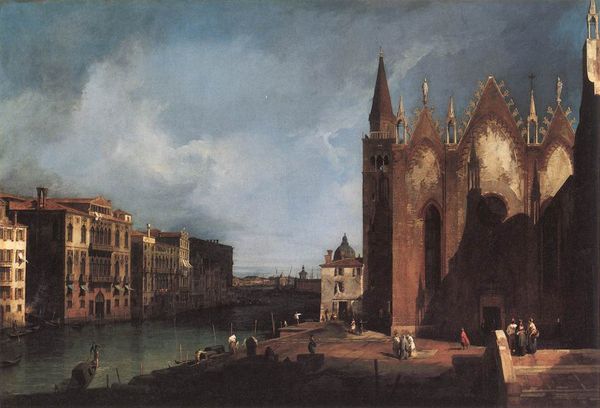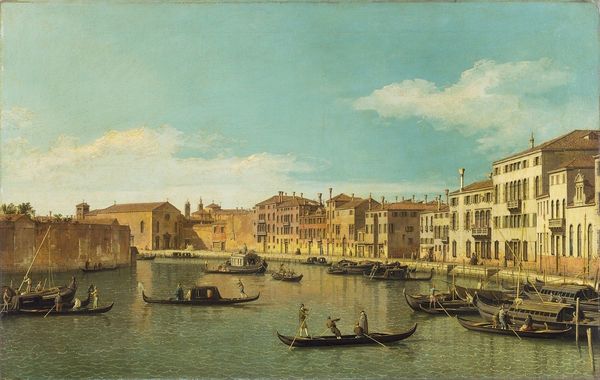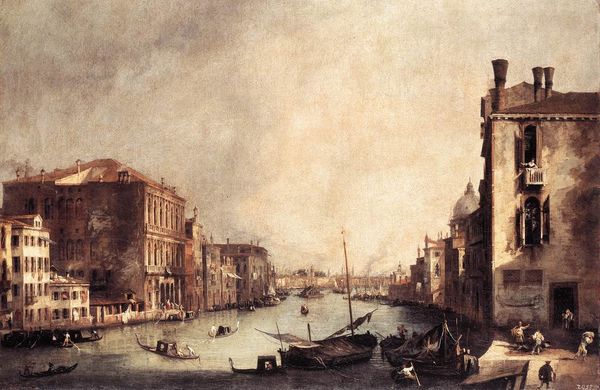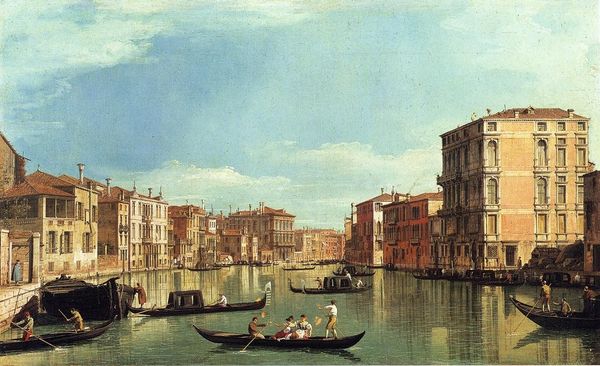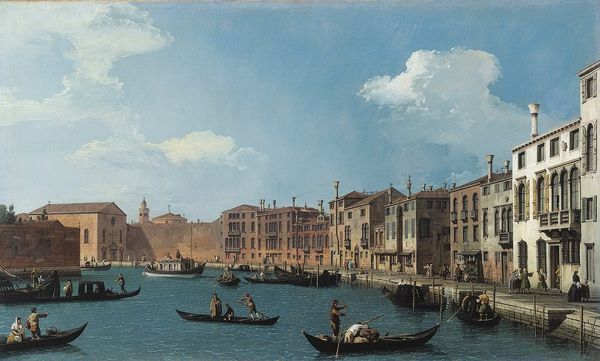
Dimensions: 32 3/8 x 44 1/2 in. (82.2 x 113 cm)
Copyright: Public Domain
Curator: Giambattista Cimaroli painted this "View of the Brenta, near Dolo" sometime between 1771 and 1800. It's currently held in the Metropolitan Museum of Art. Editor: It strikes me immediately as a painting deeply concerned with balance—the placement of the buildings, the flow of the canal, even the scattering of figures. The colors are subdued, creating a serene atmosphere, though slightly unbalanced on the right. Curator: The balanced composition you noticed probably owes a debt to Venice's economic system at the time, which valued stable and dependable markets and a structured class division. Looking at the buildings here, particularly the grand one to the right and its display of material wealth, hints at the city’s dependence on architectural design and the craftsmanship involved. Even something seemingly trivial, like the chimneys, are indicative of wealth, status and skilled labor that fueled such grand design projects in Venetian history. Editor: True, though those very structures offer a compelling asymmetricality to an otherwise carefully designed plane, a dynamism enhanced by the figures in motion in the foreground. Speaking of structures, observe how the architecture recedes, guiding the eye deeper into the canvas. I would say, its form and arrangement are really tools here. Curator: And tools used in service of solidifying social structures, too! Consider how genre painting blends into cityscape. Cimaroli probably used colors that were accessible to a painter who maybe worked for Venice's upper merchant class or other middle class businessmen on their travels—they give an ordinary view, but of something important and profitable along the Brenta canal. Editor: I cannot dismiss those material considerations, especially when looking at art production under certain constraints. Yet I argue that Cimaroli guides us beyond the surface realities into a realm where light and perspective themselves generate significance. Think of it: light illuminates, clarifies, reveals hierarchy and values in tangible and intangible form, which are crucial in this structured landscape and carefully orchestrated daily tableau. Curator: Absolutely! The work and materials behind creating that ‘illusion’ of Venetian splendor can also tell a valuable, perhaps overlooked story about that culture's daily activities along the canal, including even simple stuff like brick making to building scaffolding that created the Venice many tourists and historical buyers were drawn towards even then! Editor: A fascinating perspective. Seeing it like this enriches my earlier observation, acknowledging deeper dimensions. Curator: And I recognize I may have originally been narrowly looking into history without celebrating the technical beauty! Perhaps the painting and Venice itself benefitted when commerce allowed great architecture.
Comments
No comments
Be the first to comment and join the conversation on the ultimate creative platform.
